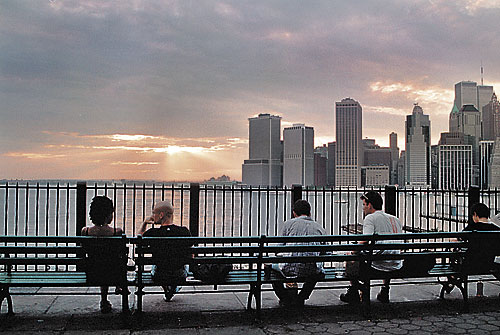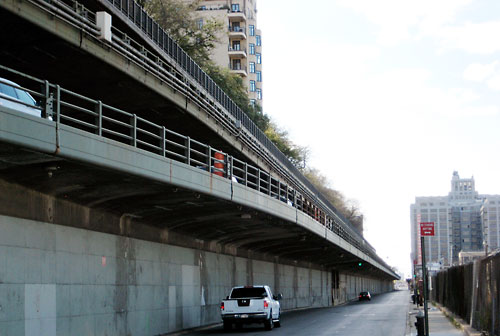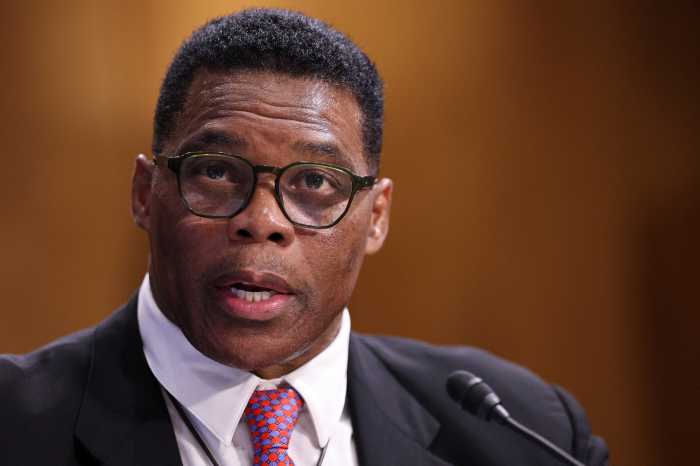It’s a triple-cantilever threat!
The Brooklyn Heights Promenade — the historic walkway that some say makes the Heights the Heights — will become a speedway for Brooklyn-Queens Expressway traffic, sending cars, trucks, and buses zipping by at eye-level during the reconstruction of the crumbling roadway beneath, transit leaders announced on Thursday.
In order to get the job done by 2026, the city must shift all traffic on the decrepit roadway to a temporary elevated one at the promenade level for at least three years — half the time it will take to finish the job — while contractors build a new triple-cantilever structure, according to Tanvi Pandya, project manager with the city’s Department of Transportation, which is overseeing the repairs.
And Pandya did not mince words when describing the effects the new route will have on the quiet neighborhood.
“That is a dramatic impact,” she said.
To make way for the cars, workers would have to erect columns along Furman Street, tear out the existing Promenade and its trees, and lay down enough blacktop to make a six-lane roadway — something that could take a year and a half to pull off, thus closing the park to the public well before cars make it their home.
Traffic would then shift from the current roadway to the temporary one while workers build the new tiered, cantilever structure, before bringing it back down to the rehabbed BQE, according to Pandya.
On the bright side, the new Promenade will be 35 feet wider after work is finished, according to Pandya, who said the city would try to incentivize the yet-be-selected contractor to finish as quickly as possible. The roadway below would feature wider lanes and shoulders — something missing from he 1950s-era highway.
Alternatively, the city could close the Promenade for a shorter period of time and not move cars to it if it chooses a plan that would refurbish the triple cantilever on a lane-by-lane basis. But that plan would take until at least 2029 — three years past the believed end of life for the present highway, when experts warn it could start collapsing under the weight of the thousands of trucks that traverse it daily.
The incremental reconstruction plan, which the city is calling the “traditional approach,” would cost between $3.4-and-$4-billion and wreak havoc on local streets, causing backups for up to 12 miles, according to Pandya, who said more of the work would be done in the middle of the night and on weekends.
Work to rehabilitate the 1.5-mile stretch of expressway from Atlantic Avenue to Sands Street can start as early as 2020 and wrap by 2026, now that state lawmakers passed a budget authorizing use of the streamlined design-build process for the city-led job, which will allow the Department of Transportation to solicit one bid for both the design and construction phases of the project, instead of contracting separate firms for each.
Transit leaders will present the two options to the community throughout the fall — the first during a public meeting on Sept. 27 — until selecting a design-build team, which will ultimately decide the best approach for rehabilitating the old infrastructure, according to Pandya.
Officials believe there are more benefits to doing all the work in one fell swoop, even if that means closing the nearly 70-year-old Promenade, which was constructed by New York City master builder Robert Moses as a comprise with Heights residents who didn’t want homes in their neighborhood demolished to make way for his beloved highway.
“I’ve had Brooklyn Heights residents say to me, ‘We know Robert Moses built the thing on the cheap and this day would come when it would need to be replaced, reconstructed, and rehabilitated,” said Department of Transportation Commissioner Polly Trottenberg.
And that day has come.
Public meeting on the Brooklyn Queens Expressway at the National Grid Auditorium (1 MetroTech Center, 2nd floor) Sept. 27 at 6:30 pm.






















